Why professionals use light e-bikes for their training
Details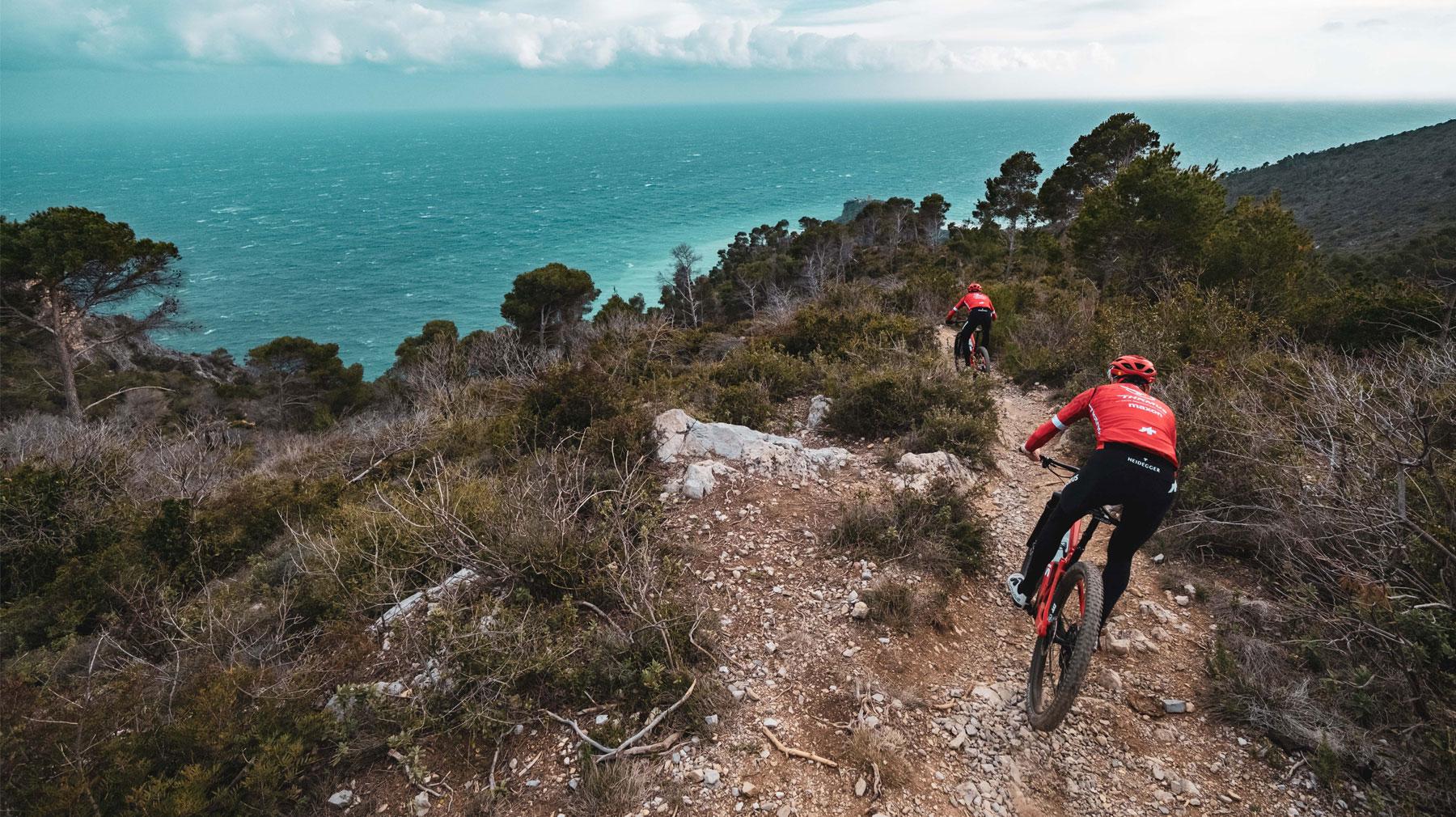
Professionals using e-bikes for training – does that make sense? “Absolutely,” says Ralph Näf, team manager of the Thömus maxon Bike Racing Team. Provided it’s the right equipment. An exclusive look into the training camp in Finale Ligure.
You’re standing on a narrow single trail overlooking the ocean in the hills of Genoa. There is a hint of spring warmth in the air. Insects. Birds. Scrub, pure harmony. Suddenly, sounds approach from behind. A group of cyclists, going at incredible speed. Tires. Pedals. Dust. Your eye follows them, the cyclist bringing up the back whoops with glee, and the group disappears around the corner. Who was that?
“In the training camp, we focus on speed and technique. For this, we stick to one trail and keep riding it again and again, going closer and closer to the limit.” Ralph Näf’s voice is analytical at first, but then the corners of his mouth tug upwards: “OK, the whole thing has quite a playfully atmosphere: We ride one behind the other in the group, with the riders trying to catch the person in front, do a few nice whips, and show how good they are.”
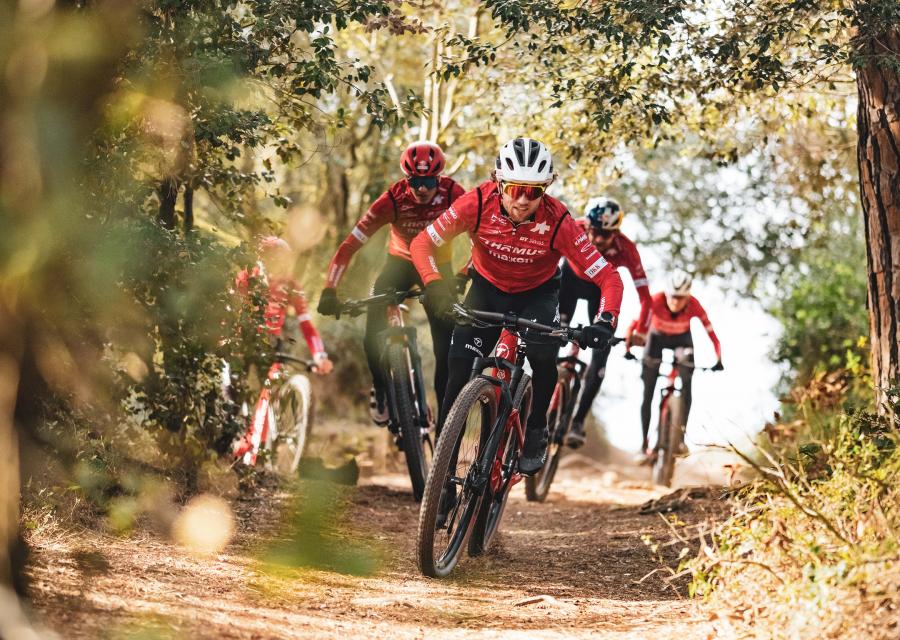
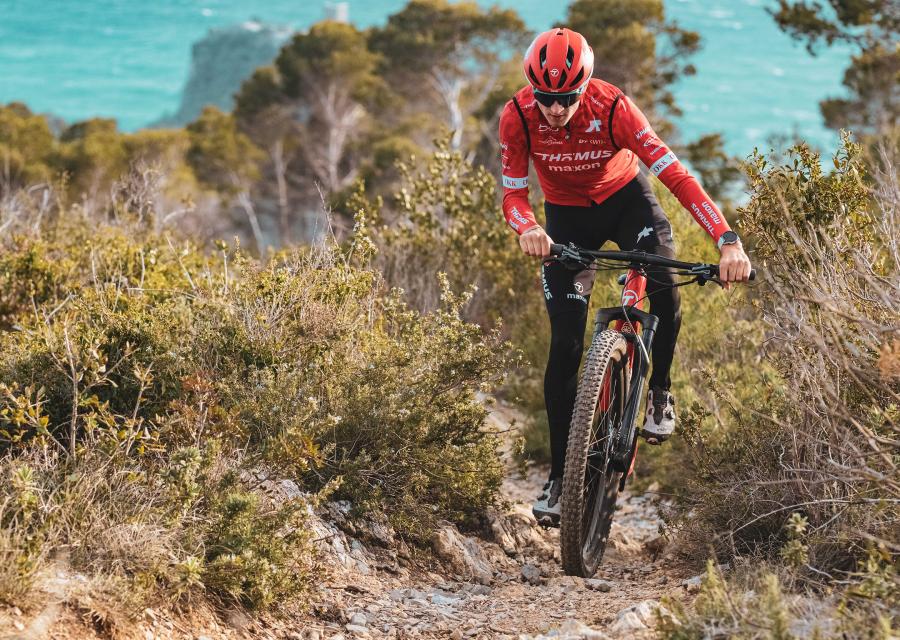
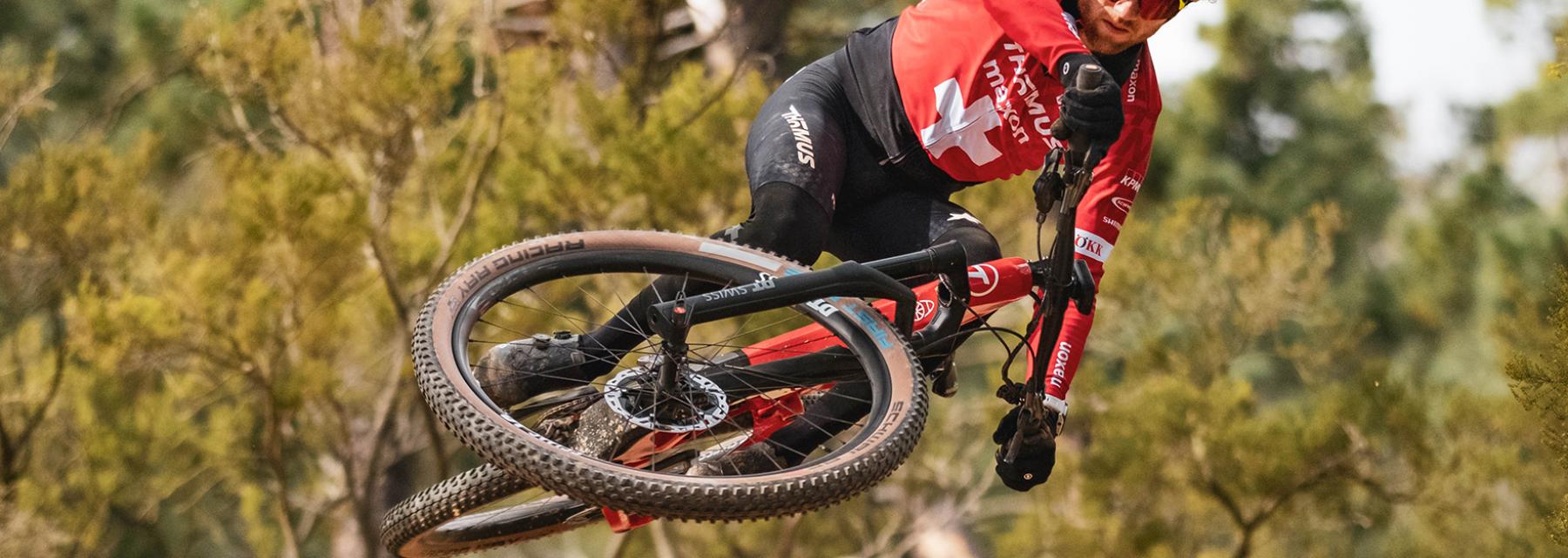
Light e-bikes with maxon BIKEDRIVE AIR add the final touch
Ralph Näf, team manager of the Thömus maxon Bike Racing Team, raves about the training camp location. No wonder – Finale Ligure, by the sea, offers perfect climatic conditions. But above all, its hinterland is Europe’s best enduro region with gnarly, challenging trails. Some of the world’s most talented riders are now training here, like Mathias Flückiger (Olympic silver medalist in Tokyo, overall World Cup winner in 2021) or Alessandra Keller (Swiss champion and overall World Cup cross-country winner in 2022).
For team manager Ralph Näf, what matters is that the riders keep getting new momentum in their training. This year, they are working with ultralight e-bikes for the first time. The drive system is from maxon. For Näf, the benefits are obvious: “Thank to the e-bikes with maxon BIKEDRIVE AIR, everyone stays within their individual base zones, and yet they can train their technical skills.” The result is more efficient training, even more fun.
As a rule of thumb, the riders have around 1,000 training hours available each year to reach their competition level. And the more good sessions they can pack into these 1,000 hours, the better. Efficiency therefore means: instead of spending five hours training base endurance, they do two hours on the road and three hours off road – with the same e-bike – and train both base endurance and technique.
Another plus is that all riders train together in one group, which of course really ups the fun factor. Näf: “It goes without saying that Alessandra Keller doesn’t have the same level of physicality as someone like Mathias Flückiger. But with maxon BIKEDRIVE AIR, she can now ride with the men during training sessions. This is a huge advantage when you’re on the road with the whole team – men, women, and up-and-coming riders – and the cyclists are at different levels.”
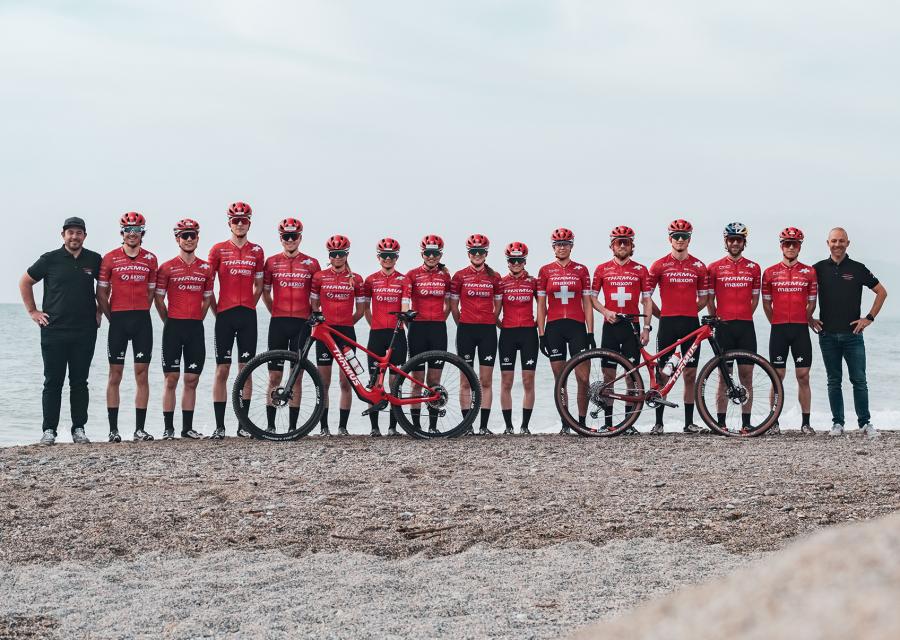
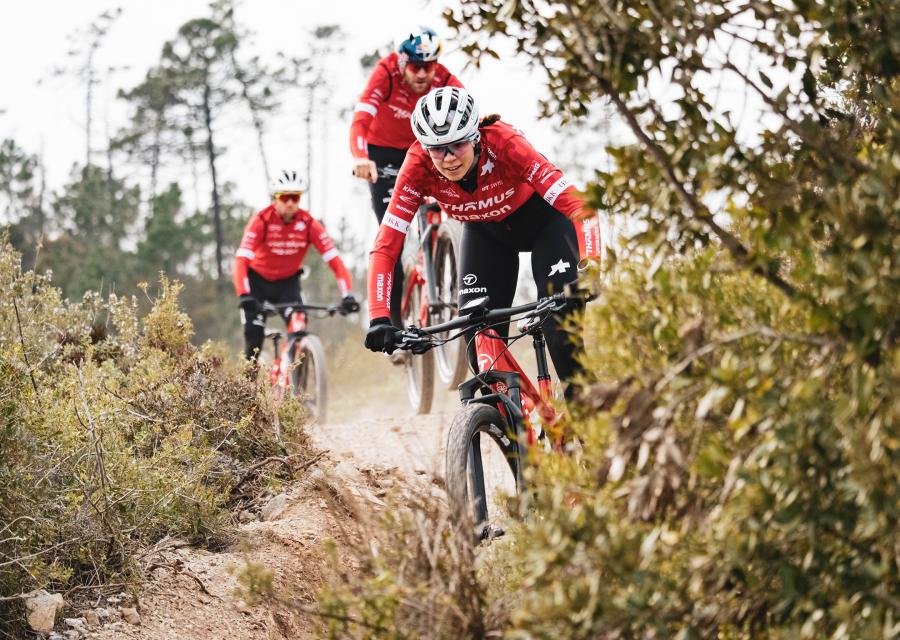
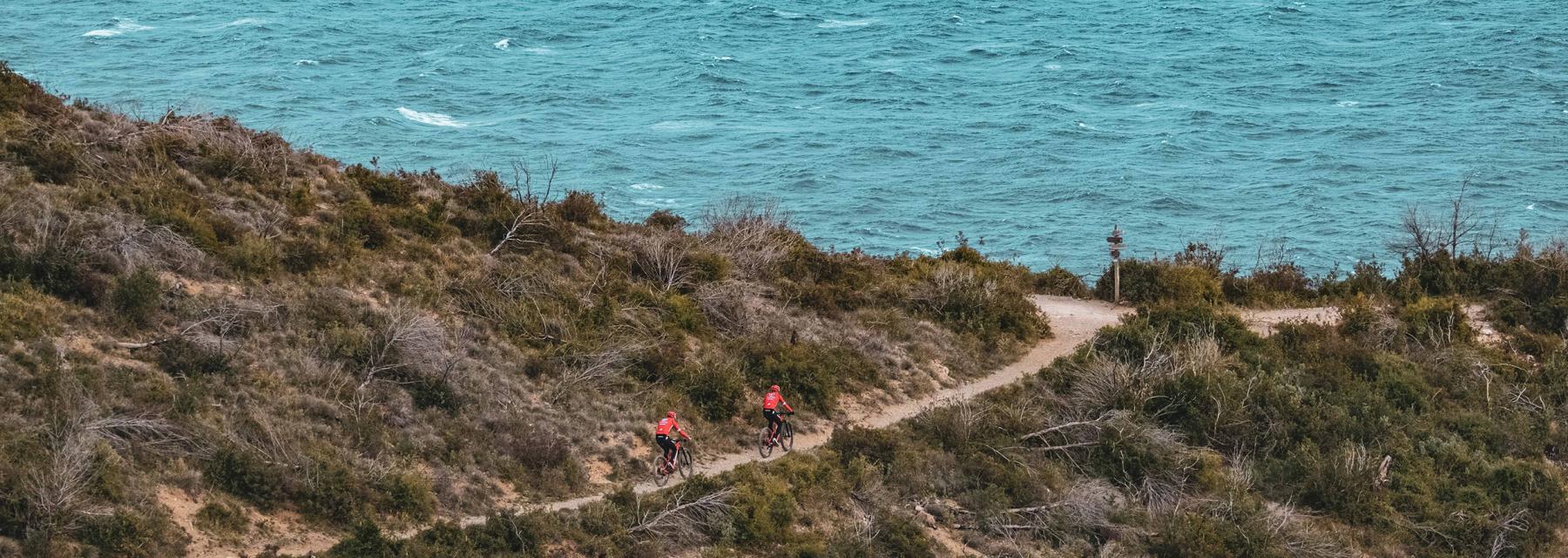
maxon BIKEDRIVE AIR: Made for high agility under the toughest conditions
After the winter break, the training camp also has another purpose. The goal is to make the bike a part of your body again, to reach the point where you can feel every nuance of its behavior. maxon BIKEDRIVE AIR scores here too, since the natural freewheel means the riders notice no resistance when they ride the e-bike without assisted pedaling. It responds to the movements without the riders have to exert too much energy. This agility is crucial for easily getting around corners on narrow trails.
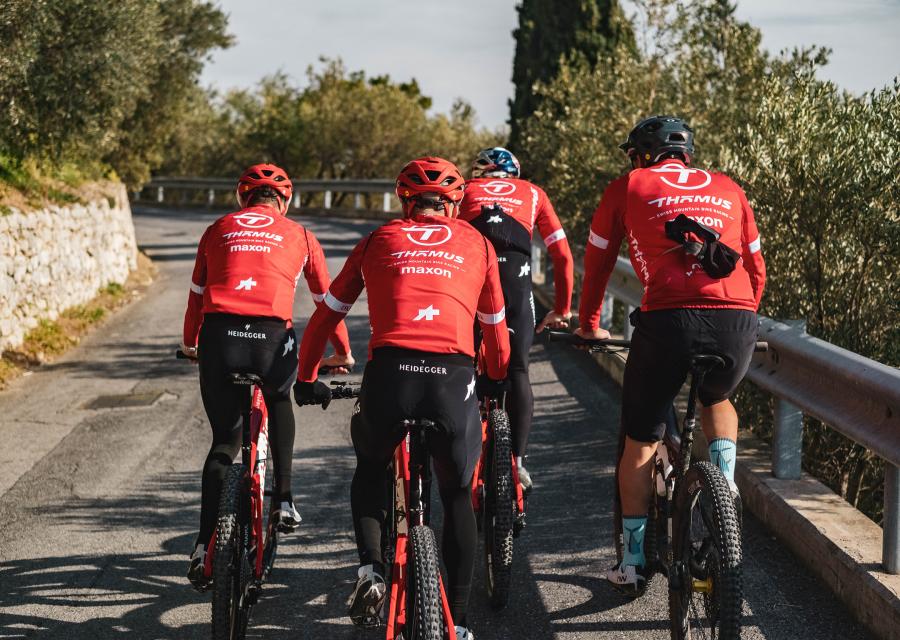


The intensity with which the riders train here places the highest demands not only on their physical condition, but also their training equipment. Näf: “We cannot have any defects in our machines. We want to train. We don’t want to be worrying about whether or not the equipment is working. That’s why we rely on maxon BIKEDRIVE AIR, a drive that we can reliably use even under the toughest conditions.”
Conversely, for maxon, the riders are among the most important test riders. They test the drives on extreme terrain and under the toughest loads. Näf collects the riders’ feedback and shares it with maxon. This agility is crucial for easily getting around corners on narrow trails.

But the training camp can’t be all work and no play. “For us, Italy is always also a bit of dolce vita,” says Näf. “We eat well and thus recover from the hard training sessions. We trainers talk shop about technique and look at how we can make the bikes even better. And the riders go on spins to lots of small cafés by the sea with their excellent espresso. And even though it’s still early in spring, some have even dared to have a quick dip in the water.”
